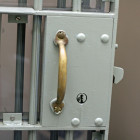
Teen bleach attack: prank or crime?
|
Four teenage boys are now in custody for throwing a balloon filled with bleach at a 14 year old boy. Miguel Mesa, who just finished 7th grade in Lilburn, was walking home from school when the bleach hit him in the face, nearly blinding him. He may have permanent eye damage. The four suspects are all Meadowcreek High School students in Gwinnett County. Police say one of them used a Super Soaker water gun to spray even more bleach on the victim. As the Atlanta Journal-Constitution reports, the teens told investigators they were only trying to ruin the boy’s clothes. The case is generating strong debate. Was it an end of year prank carried out by boys who didn’t know the dangers of bleach? Or was it a heinous crime? Columnist Maureen Downey calls it a senseless act that deserves punishment, and about 50 of her readers agree.






